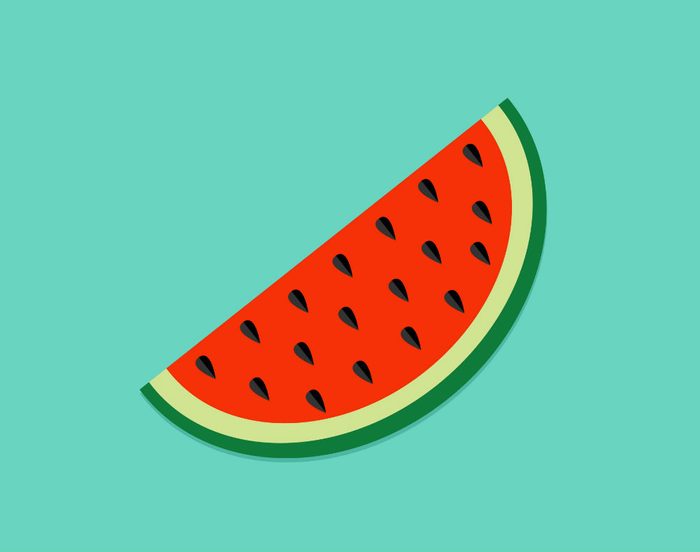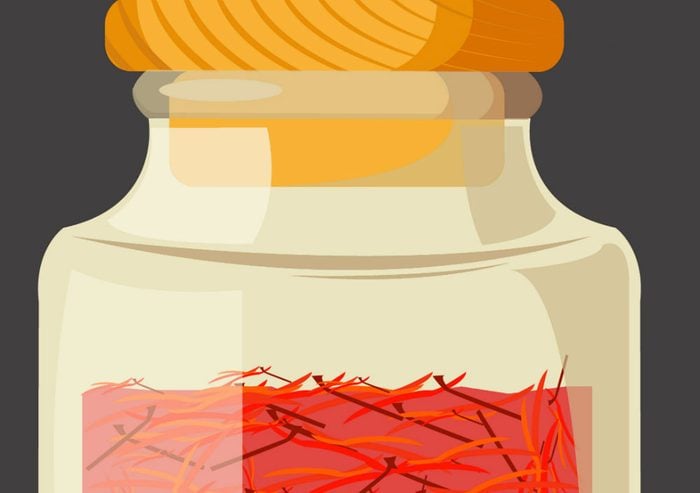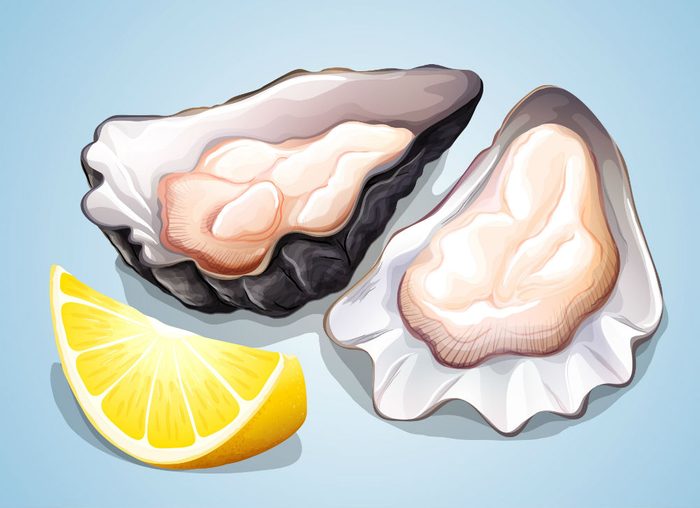
Watermelon
This juicy red fruit could be the new sexual star. While watermelon is 92 percent water, the remaining eight percent contains the phytonutrient citrulline, which converts to arginine, an amino acid that relaxes blood vessels, according to 2008 research from Texas A&M University’s department of horticultural sciences.
Although not as organ-specific as drugs that treat men’s erectile dysfunction, watermelon may help improve blood flow to erectile tissue (present in the female clitoral area as well as the male penis), increasing arousal. Scientists at the university’s Fruit and Vegetable Improvement Center are now working on increasing the fruit’s citrulline content.
But if you are trying to conceive, don’t overdo it!
Watermelon, like tomatoes, contains the antioxidant lycopene, which is in the same family as carotene and therefore has the same beneficial antioxidant effects.
On the one hand, that’s great since carotene, found in many brightly coloured foods, has been shown to lower the risk of cancer and heart disease.
But it is also anti-estrogenic, says Dr. Sony Sierra, a reproductive endocrinologist and infertility specialist at Toronto’s LifeQuest Centre for Reproductive Medicine, “so a very high volume may block estrogen and prevent the lining of the uterus from growing and the fertilized egg from implanting.”

Saffron
Massimo Marcone, an associate professor of food science at the University of Guelph, used to dismiss aphrodisiacs as mere folklore.
In 2011, in fact, he conducted a thorough scientific review of more than 200 international studies on consumable aphrodisiacs. He rejected almost all as invalid. But Marcone was shocked to find that a few studies on one particular spice-saffron-held up to close scrutiny.
“Not only does saffron appear to have aphrodisiac properties for both men and women,” Marcone says, “but it helps with anxiety, insomnia, PMS and insulin resistance.”
The seductive spice, whose red-gold threads come from a type of crocus that is native to Mediterranean Europe and Southwest Asia (not the same variety that pokes its pretty head through Canadian snows in early spring), contains antioxidants including crocin, crocetin and safranal.
These are believed to be responsible for increasing sexual desire and arousal, according to studies, Marcone reviewed. In the studies, they measured blood flow to sexual organs and frequency of sexual encounters after consuming the spice.
The ancients knew saffron‘s power: It’s said that Alexander the Great added it to his rice and tea, Cleopatra bathed in it before meeting her lovers, and Romans were known to sprinkle saffron on newlyweds’ beds.
Available in supermarket spice aisles and used in Spanish paella, Moroccan tajine, Italian risotto and many Persian/Iranian dishes, saffron is pricey, running from $50 to $300 an ounce. But a little—a tiny pinch—goes a very long way,says post-doctoral fellow Sanan Wang, who worked with Marcone on the review.

Oysters
Skeptics have dismissed the purported aphrodisiac benefits of eating oysters as purely psychological, based on their suggestive shape and slippery texture.
But Gloria Tsang, a Vancouver registered dietitian, says there may be something to the belief.
“A lot of shellfish— including oysters, clams, crabs, lobsters and mussels— are high in zinc, which can trigger a surge in the production of sex hormones.”
Tsang adds that these bivalve mollusks also contain two rare amino acids: D-aspartic acid and N-methyl-D-aspartate.
Joint American-Italian research in 2005 at Barry University in Miami and the Laboratory of Neurobiology in Naples, Italy, found that giving these amino acids to rats increased testosterone in the males and progesterone in the females.
Both are hormones associated with a greater sexual activity.
